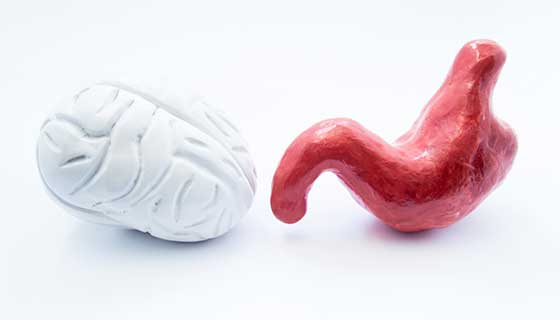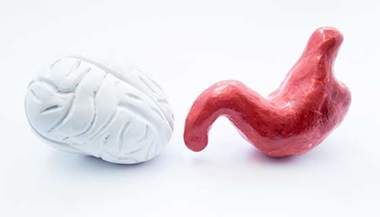Constipation
What is constipation?
Constipation occurs when your stools are painful. Or they don't happen often enough. It's the most common GI (gastrointestinal) problem.
You may have constipation if:
-
You have bowel movements less than 3 times a week.
-
Your stool is hard, dry, and in small pieces.
-
You have to strain to have a bowel movement.
-
It hurts to have a bowel movement.
Normal bowel movements vary depending on the person. They may happen as often as 3 times a day. Or they may happen just 3 times a week.

What causes constipation?
Your stool gets hard and dry when your colon (large intestine) absorbs (soaks up) too much water.
In most cases, as food moves through your colon, the colon absorbs water while it makes stool. Muscle movements (contractions) push the stool toward your rectum. When the stool gets to the rectum, most of the water has been soaked up. The stool is now solid.
If you have constipation, your colon's muscle movements are too slow. This makes the stool move through your colon too slowly. The colon absorbs too much water. The stool gets very hard and dry.
Some of the most common diet and lifestyle causes of constipation are:
-
Not getting enough exercise.
-
Not drinking enough liquids.
-
Not eating enough fiber-rich foods.
-
Not moving your bowels when you feel the urge to.
-
Changes in your lifestyle, such as travel, pregnancy, and old age.
Other causes of constipation include:
-
Medicines.
-
A problem with how your stomach and bowels work (such as irritable bowel syndrome).
-
Your intestine does not work well.
-
Metabolic problems, such as thyroid disease.
-
Intestinal blockage.
What are the symptoms of constipation?
Each person’s symptoms may vary. Symptoms of constipation may include:
-
Difficult and painful bowel movements.
-
Fewer than three bowel movements a week.
-
Having a hard, dry stool that is hard to pass.
-
Feeling bloated.
-
Belly (abdominal) pain or discomfort.
-
Straining to move your bowels without success.
Many of these symptoms may be caused by other health problems. Always talk with your health care provider to be sure.
How is constipation diagnosed?
Most people have constipation at one time or another. To see if you have constipation, your health care provider will do several tests. These tests will depend on how long you have had symptoms and how serious your case is.
First your provider will look at:
-
Your age.
-
If you have any blood in your stool.
-
Any changes in your bowel habits.
-
Weight loss.
Your provider will likely:
-
Ask about your past health. You will be asked to give details about your constipation, such as how long you have had symptoms and how often you have bowel movements.
-
Give you a physical exam. Your provider will do a full physical exam.
-
Give you a digital rectal exam. This exam helps tell if the area is soft, blocked, or bloody. It can also check how much and what kind of stool you have. Your provider will also see if your rectum is bigger than normal. And they'll check the anal sphincters (muscles).
You may also need other tests, such as:
-
Abdominal X-ray. This X-ray test can show if the bowels are full of stool (or air).
-
Blood work. Blood is taken to make sure you don't have iron deficiency anemia, which may be a sign of slow bleeding from the colon.
-
Lower GI series (also called barium enema). This is an X-ray exam of your rectum, the large intestine, and the lower part of your small intestine. You will be given a fluid called barium. It coats the organs, so that they can be seen on an X-ray. An X-ray of your belly will show if you have any narrowed areas, blockages, or other problems. An X-ray of the area around the anus and rectum (called a defecogram) may be done to see how well you can hold and release stool.
-
Colonoscopy. This test looks at the full length of your large intestine. It can help check for any abnormal growths, tissue that is red or swollen, sores (ulcers), or bleeding.
-
Sigmoidoscopy. This test lets your provider check the inside of part of your large intestine. It helps to tell what is causing constipation.
-
Colorectal transit study. This test shows how long it takes for food to move through your colon. You will be asked to swallow pills (capsules) filled with small markers that can be seen on an X-ray. The X-rays will show how the capsules moved through your colon.
-
Anus and rectum (anorectal) function tests. These tests can tell if you are constipated because your anus or rectum is not working well.
How is constipation treated?
Your health care provider will come up with a care plan for you based on:
- Your age, overall health, and past health.
- How serious your case is.
- How well you handle certain medicines, treatments, or therapies.
- If your condition is expected to get worse.
- Your opinion and what you want to do.
- Drinking more water and juice.
- Getting regular exercise.
- Giving yourself time to have a bowel movement each day. Sitting for 10 minutes after meals can be helpful.
- Eating more fiber. If you don't eat enough fiber, add a fiber supplement.
- Taking laxatives. Your provider can discuss your choices.
- Stopping or changing medicine.
- Add a footstool in front of your toilet to raise your legs. This puts you in a better position to move your bowels.
- Doing physical therapy with or without biofeedback (part of a special physical therapy program).
| Foods | Moderate fiber | High fiber |
| Bread | Whole-wheat bread, granola bread, wheat bran muffins, grain bars, waffles, popcorn | |
| Cereal | 100% whole-grain cereals, oatmeal, granola, and oat bran | 100% bran cereals. |
| Vegetables | Beets, broccoli, Brussels sprouts, cabbage, carrots, corn, green beans, green peas, acorn and butternut squash, spinach, potato with skin, avocado | |
| Fruits | Apples with peel, dates, papayas, mangoes, nectarines, oranges, pears, kiwis, strawberries, applesauce, raspberries, blackberries, raisins | Cooked prunes, dried figs |
| Meat substitutes | Peanut butter, nuts | Baked beans, black-eyed peas, garbanzo beans, lima beans, pinto beans, kidney beans, chili with beans, trail mix |
What are possible complications of constipation?
Constipation can cause other health problems, such as:
-
Hemorrhoids. Red, swollen veins in the rectum. They happen when you need to keep straining to have a bowel movement.
-
Anal fissures. Tears in the skin around the anus. They happen when hard stool stretches your sphincter muscle. They can cause bleeding in your rectum.
-
Rectal prolapse. This is when a small amount of your intestinal lining pushes out from your anal opening. It is caused by straining to have a bowel movement.
-
Fecal impaction. This is when a large lump of hard, dry stool stays stuck in your rectum. The colon’s normal pushing action can’t push out the stool. This is seen mostly in children and older adults.
Can constipation be prevented?
Many of the same lifestyle changes that help treat constipation may also help to stop it from happening:
-
Have plenty of fiber, water, and liquids each day.
-
Get daily regular exercise. Adults should do 150 minutes (2 hours and 30 minutes) of moderate intensity exercise every week. If you are new to exercise, this can be broken down into 10-minute periods of activity during the day. Daily movement activities, such as walking, gardening, house cleaning. count. They can make a big difference in how you feel.
-
Allow plenty of time for bowel movements. When you feel the urge to have a bowel movement, be sure to do it.
-
Try to have a bowel movement at the same time each day.
-
If another health problem makes you more likely to have constipation, take your health care provider’s advice for treating that problem.
When to get medical advice
Most people have constipation at one time or another. But contact your health care provider if:
-
Constipation lasts longer than 3 weeks.
-
Constipation pain is stopping you from doing your daily activities.
-
You have lasting pain in the rectum or belly.
-
You have unexplained weight loss.
-
You have symptoms of any of the complications of constipation.
-
You have rectal bleeding, or see blood in the toilet bowl. It may be mixed in with the stool.
Key points about constipation
-
Constipation is the most common GI (gastrointestinal) problem.
-
You may be constipated when your stools are painful and happen less than 3 times a week.
-
Your stool will be hard, dry, and in small pieces.
-
Your stools get hard and dry when your colon absorbs too much water.
-
Constipation symptoms can include stomach cramps and feeling tired.
-
Constipation can cause other health problems, such as hemorrhoids (red, swollen veins in the rectum).
-
Making diet and lifestyle changes can reduce constipation symptoms. These changes can also stop constipation from happening.






